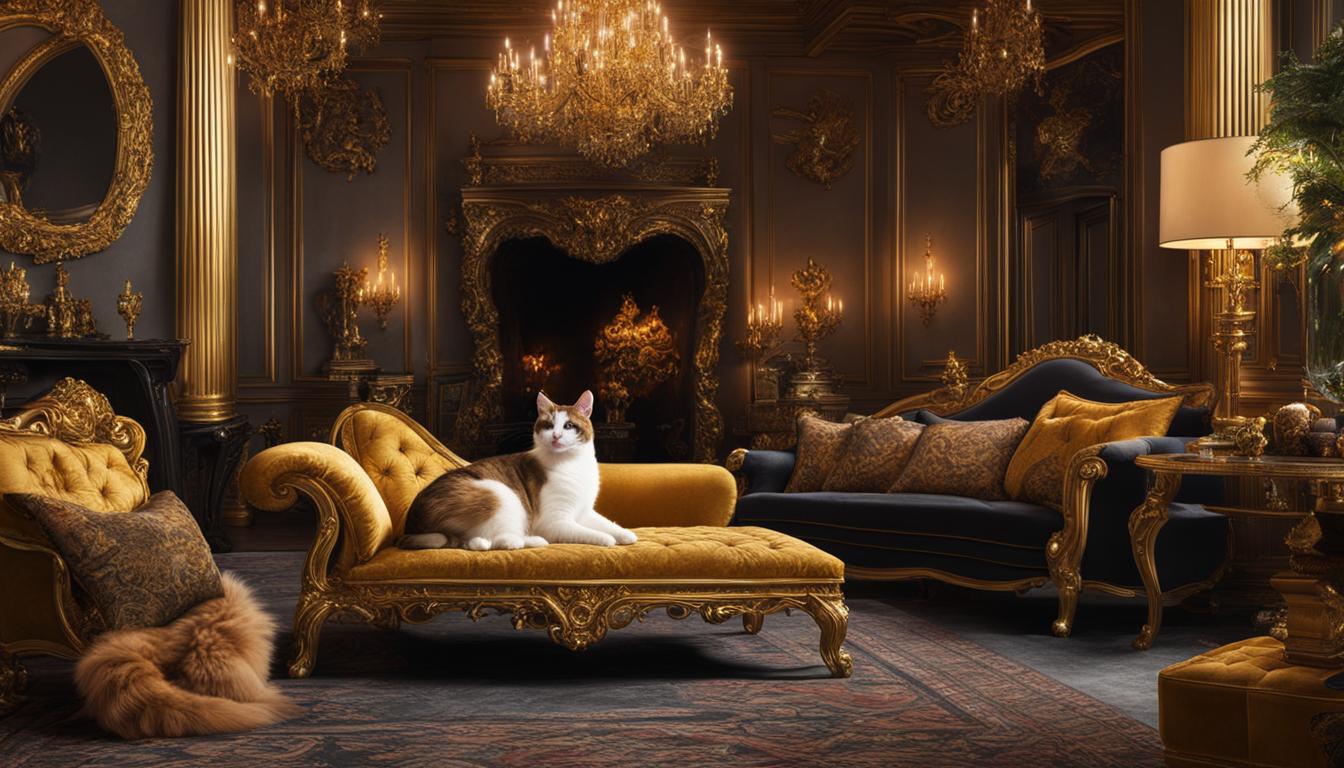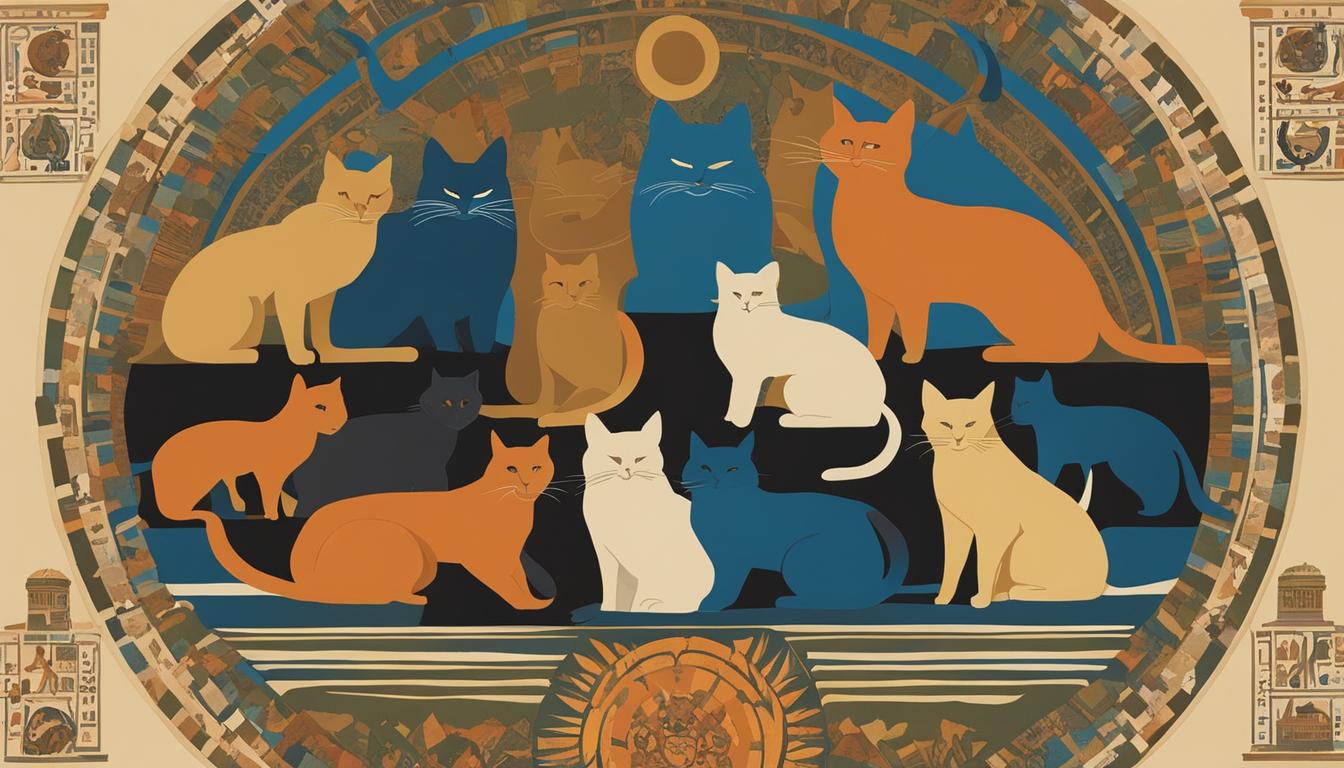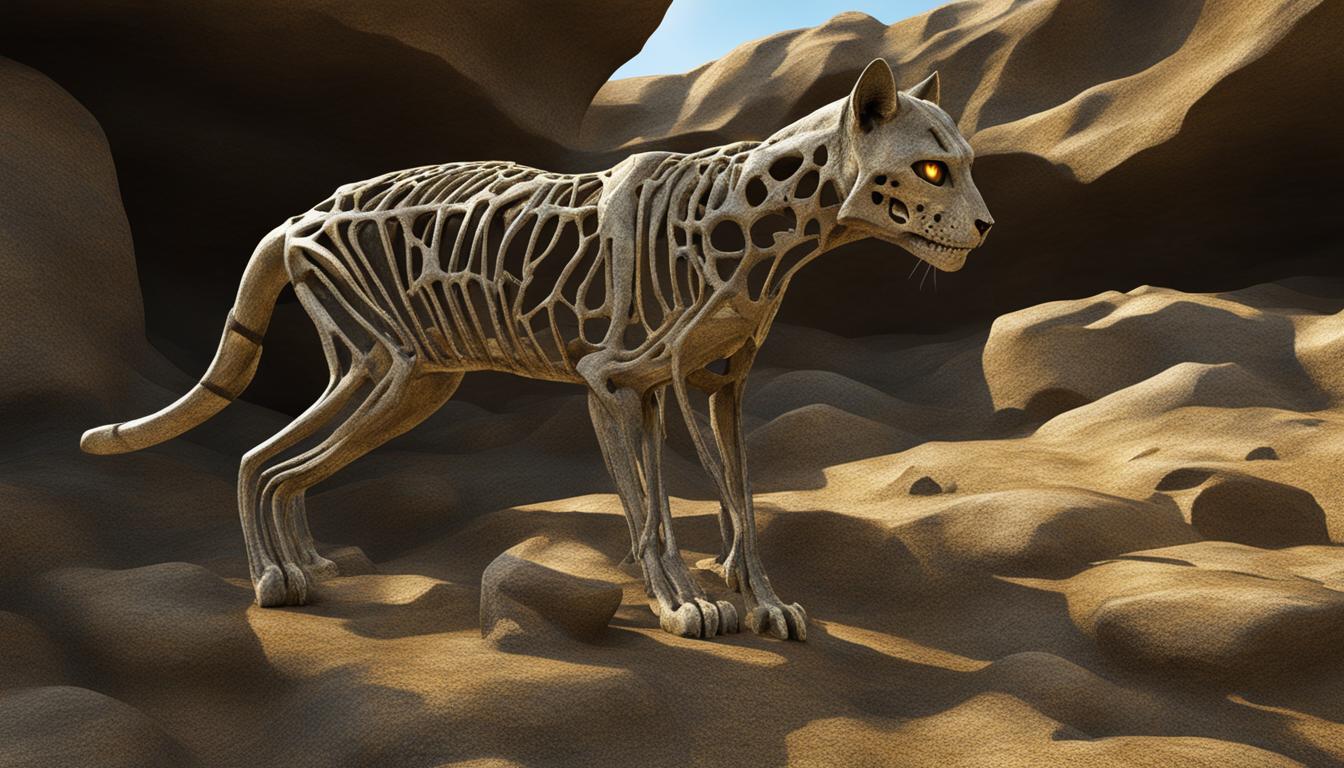When it comes to the fascinating world of royal families, we often think of opulent palaces, magnificent jewels, and grand ceremonies. But there’s one regal companion that has been a constant presence throughout history – cats! These elegant and mysterious creatures have long held a special place in the hearts of kings, queens, and nobility.
From ancient times to modern-day monarchies, cats have shared the royal spotlight, adding a touch of grace and charm to historical palaces. Let’s embark on a journey through time as we explore the captivating tales of cats in royal households.
Key Takeaways:
- Royal households have had a long-standing affinity for cats, valuing their companionship and regal presence
- Cats in royal families have been associated with nobility, elegance, and independence
- Throughout history, cats have been revered in various cultures, including ancient Egypt and East Asia
- The significance of cats in royal households extends beyond mere pets, with some cats even being worshipped as deities
- The bond between cats and their royal owners continues to be cherished and celebrated, highlighting the timeless connection between humans and feline companions
Royal Cats of Ancient Egypt
In ancient Egypt, cats were not just ordinary pets – they were revered as deities. The goddess Bastet, often depicted with the head of a lioness or a domestic cat, was worshipped as the protector of the pharaoh. Cats were considered sacred animals and were even mummified and buried alongside their owners as a sign of respect. In 1888, around 80,000 cat burials were discovered in a tomb in Middle Egypt, showcasing the high regard ancient Egyptians had for these royal creatures.
As symbols of divinity, cats held a special place in ancient Egyptian society. They were believed to possess magical powers and were often associated with fertility, protection, and good fortune. The presence of a cat in a household was believed to bring blessings and ward off evil spirits. It is no wonder that these regal felines were so highly esteemed in royal households.
The worship of cats in ancient Egypt went beyond mere reverence. It was an integral part of their religious and cultural practices. The ancient Egyptians believed that cats possessed a connection to the divine and were capable of communicating with the gods.
The belief in the divine nature of cats led to elaborate burial rituals when these royal creatures passed away. These rituals included the mummification of cats, burial in sacred tombs, and the creation of intricate cat-shaped coffins. The discovery of the vast number of cat burials in Middle Egypt is a testament to the deep respect and reverence ancient Egyptians had for their royal feline companions.
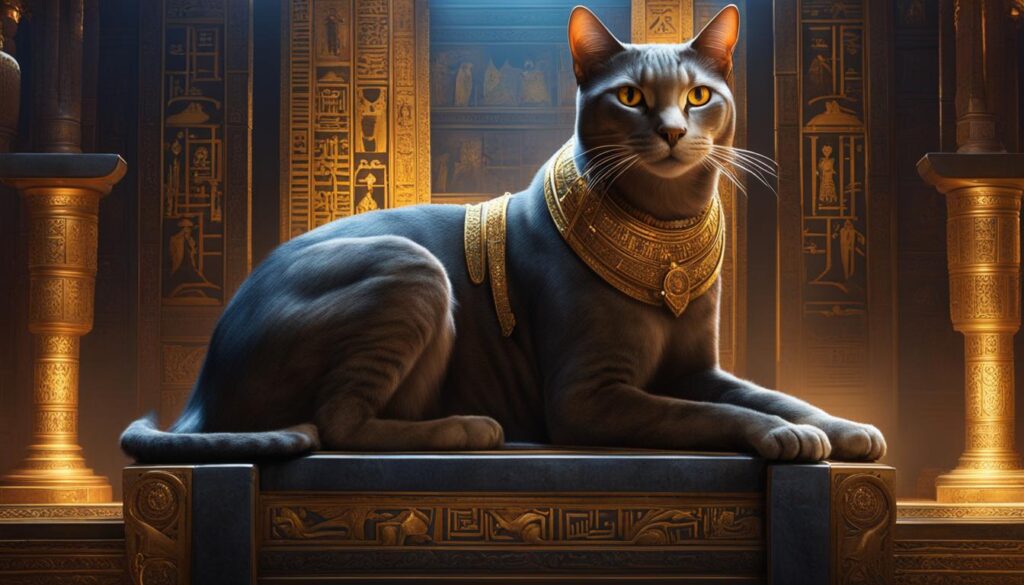
As we delve into the history of cats in royal households, it becomes clear that their association with regality dates back centuries. From ancient Egypt to modern times, cats have captivated our hearts and earned their place alongside kings and queens.
Royal Cats of East Asia
East Asia has a rich history of royal cats, where these regal felines held a place of honor in the palaces of kings and emperors. From Siamese cats in Thailand to Japanese and Chinese cat traditions, the unique bond between cats and royalty in this region is both fascinating and captivating.
Siamese Cats in Thailand
In Thailand, Siamese cats were considered a symbol of prestige and grace, reserved exclusively for the royal family. These stunning cats with their striking blue eyes and sleek coats were treasured companions to the kings and queens of Siam. Siamese monks even wrote and illustrated a book, “Smud Khoi,” dedicated to their love for temple cats, highlighting the reverence they held for these regal creatures.
Japanese and Chinese Cat Traditions
In Japan, cats were believed to possess mystical powers, and they were often kept in pagodas to guard priceless manuscripts. The Japanese also embraced the “Maneki-neko,” a beckoning cat figurine believed to bring good luck and fortune. In China, cats were favored as pets during the Song dynasty, signifying their significance in royal circles. These cats received the utmost care and attention, reflecting their elevated status in Chinese society.
The royal cats of East Asia showcase the deep appreciation and admiration for cats in this region. Their role as companions to the royal families and their association with good fortune and mysticism highlights the unique connection between these noble creatures and the rulers of the past. The fascinating traditions and stories surrounding these royal cats continue to captivate us and remind us of the enduring bond between cats and royalty.

Table: Cats in the Royal Palaces of East Asia
Below is a breakdown of the different breeds of cats and their significance in the royal palaces of East Asia:
| Country | Cat Breed | Symbolism |
|---|---|---|
| Thailand | Siamese | Symbol of prestige and grace |
| Japan | Various breeds | Mystical powers and guardianship of manuscripts |
| China | Various breeds | Pets of the Song dynasty, signifying royal favor |
Royal Cats of Russia
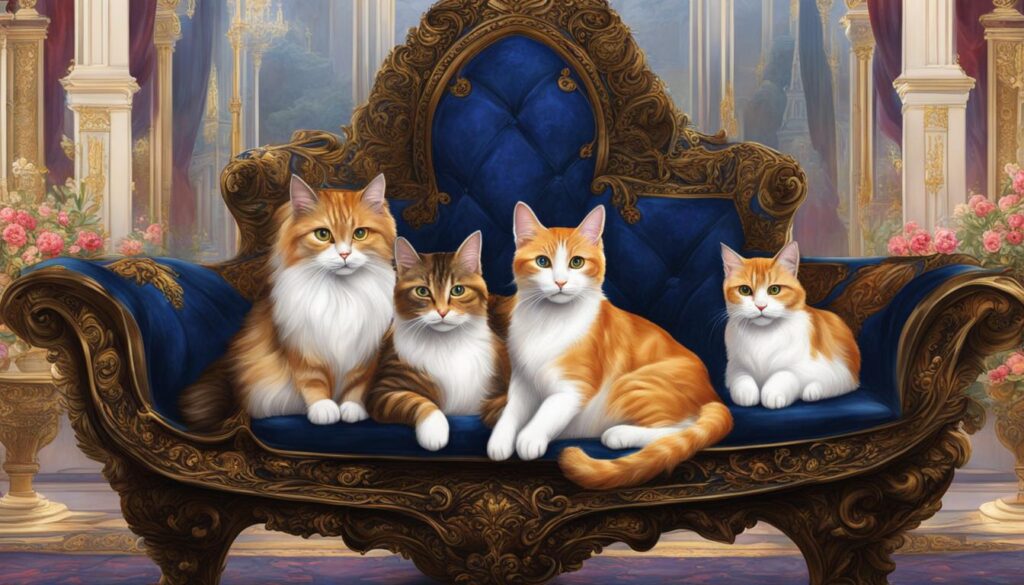
In the grandeur of the Winter Palace, cats took on a prestigious role as esteemed members of the Russian royal household. It all began in 1745 when Empress Elisabeth Petrovna introduced cats to control pests within the palace walls. However, it was Catherine II the Great who truly elevated these feline companions to royal status.
Catherine II had a fondness for the regal Russian Blue breed, admiring their elegant appearance and gentle nature. She was known to gift Russian Blue cats to ambassadors of other sovereigns, spreading their presence beyond the Winter Palace. These cats enjoyed special privileges in the royal residence, living a life of luxury fit for a noble creature.
But it wasn’t just the Russian Blues that held esteemed positions within the palace. The cats employed for pest control were promoted to guard duty, complete with salaries and extra rations. These diligent felines kept the palace free of rodents, ensuring the cleanliness and tranquility befitting of a royal environment.
The Russian Blue: A Regal Breed
| Characteristic | Description |
|---|---|
| Appearance | The Russian Blue has a short, plush coat that is bluish-gray in color. Their almond-shaped green eyes and elegant physique exude a regal aura. |
| Temperament | These cats are known for their calm and reserved nature. They are often described as intelligent, gentle, and loyal companions. |
| Personality | Russian Blues are independent yet affectionate cats. They enjoy the company of their human companions but also appreciate their alone time. |
| Relation to Royalty | The Russian Blue’s association with Russian royalty solidified their regal status. Their sleek and sophisticated appearance perfectly matched the grandeur of the Winter Palace. |
The Russian Blue breed’s connection to Russian royalty is a testament to the esteemed place these cats held in the hearts of the imperial family. Their presence added an air of elegance and grace to the Winter Palace, leaving a lasting legacy within the annals of royal history.
Royal Cats of Great Britain
As we explore the history of cats in royal households, we cannot overlook the feline companions of the British Royal Family. While dogs have often taken center stage in British royal history, cats have also left their mark on the regal halls. From beloved pets to esteemed “Chief Mousers,” these royal cats have played a unique role in the monarchy.
Cats in the British Royal Family
The British Royal Family has had a long-standing tradition of keeping cats as pets. Queen Victoria, known for her love of animals, allowed her children to have cats as companions. In fact, she was often photographed with her favorite feline friends. Queen Alexandra, wife of King Edward VII, was also a cat lover and was frequently seen with her pet kitten.
Chief Mousers
Beyond simply being royal pets, cats have served an important practical purpose in the British royal households. Since the 1920s, cats have held the official title of “Chief Mousers” to the Cabinet Office. These cats have the important duty of keeping the Prime Minister’s residence free of rodents. The Chief Mousers have become cherished members of the staff, ensuring that the halls of power remain mouse-free.
Despite their smaller presence in British royal history compared to dogs, cats have left an indelible mark. From the royal pets of Queen Victoria and Queen Alexandra to the dedicated Chief Mousers of the Cabinet Office, these regal felines have added their own touch of elegance and charm to the monarchy.
Table: Royal Cats of Great Britain
| Name | Role | Monarch |
|---|---|---|
| Peter | Chief Mouser to the Cabinet Office | Multiple monarchs |
| Humphrey | Chief Mouser to the Cabinet Office | Multiple monarchs |
| Wilberforce | Chief Mouser to the Cabinet Office | Multiple monarchs |
| Tiddles | Chief Mouser to the Cabinet Office | Multiple monarchs |
| Larry | Chief Mouser to the Cabinet Office | Queen Elizabeth II |
“Royal” Cats of America
America may not have a monarchy, but that doesn’t mean cats haven’t left their mark in the country’s history. Some American presidents had a soft spot for these regal felines, proving that their charm transcends borders and titles. Two notable cat lovers in the White House were Abraham Lincoln and Calvin Coolidge.
Abraham Lincoln, known for his leadership during the American Civil War, also had a fondness for cats. Lincoln’s love for these furry companions was so evident that he was often spotted playing with them in the White House. He even fed his cats with a gold fork, believing that they deserved nothing but the best. Lincoln’s cat, Dixie, was said to be his favorite and incredibly intelligent, with the president famously stating that Dixie was smarter than his entire cabinet.
“I have two cats at home, which I love a lot. I have named them after you – one is Tiger, and the other one is Streaky. I am going to have to send out an appeal on the radio. Tiger, it seems, has disappeared.”
– President Calvin Coolidge
Another cat enthusiast in the White House was President Calvin Coolidge. Coolidge was known to have a deep affection for animals, and cats were no exception. In fact, when Coolidge’s beloved cat, Tiger, went missing, he sent out a radio appeal for help, showing just how much he cared for his feline companion. The bond between these American leaders and their cats highlights the enduring connection between humans and these captivating creatures.
While cats may not hold a formal royal status in America, their presence in the lives of these influential figures showcases the immense joy and companionship they bring, regardless of titles or positions. Cats have a way of finding their way into the hearts of people, even those who hold the highest offices in the land.
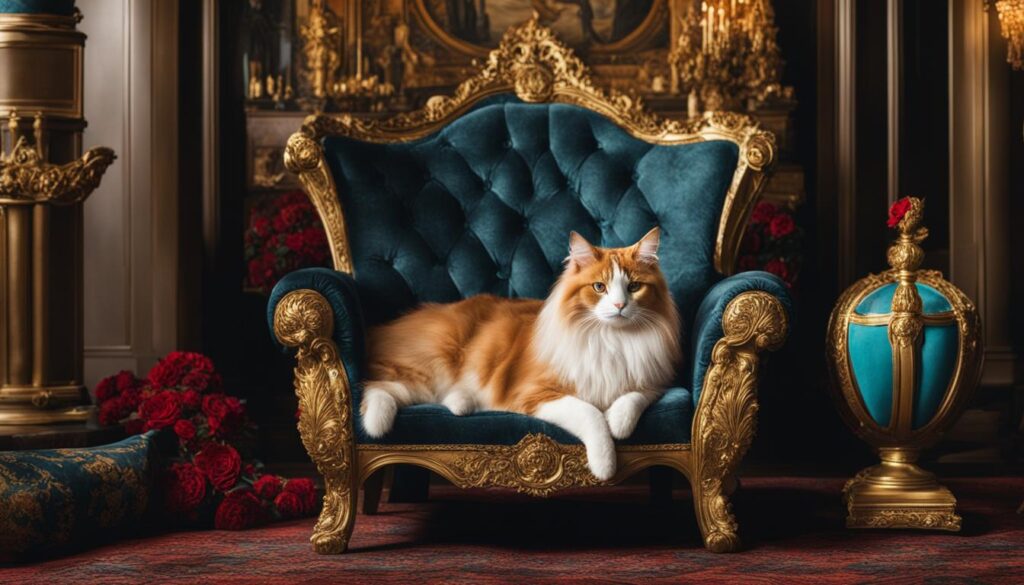
Understanding the Royalty of Cats
When it comes to the association between cats and royalty, there is a certain air of majesty and regality that surrounds these elegant felines. But why are cats considered royal? It is their inherent characteristics that make them the perfect companions for kings and queens throughout history.
“Cats are connoisseurs of comfort.”
Firstly, cats possess a unique grace and elegance that befits their royal status. Their lithe movements and impeccable grooming habits make them a symbol of refinement and sophistication. In addition, their independent nature mirrors the authority and self-assuredness often associated with monarchs.
Furthermore, cats have a natural ability to blend seamlessly into luxurious surroundings. Their sleek coats and striking eyes complement opulent palaces, enhancing their regal aesthetic. Whether lounging on velvet cushions or perched on gilded thrones, cats effortlessly become part of the grandeur and splendor of royal households.
Lastly, the companionship that cats offer is unparalleled. Their loyal and affectionate nature provides emotional support to their royal owners. A cat’s presence can bring comfort and companionship during moments of solitude, creating an intimate bond between monarch and feline.
In Summary
Cats are associated with royalty due to their grace, elegance, independent nature, ability to blend into luxurious surroundings, and the loyal companionship they offer. These characteristics have solidified their regal status throughout history, as they embody the grandeur and authority that kings and queens represent. The divine associations in ancient Egypt and the reverence cats received in various cultures further illustrate their royal connection. Cats truly reign supreme in the hearts of those who appreciate their regal qualities.
| Characteristics | Reasons for Royal Association |
|---|---|
| Grace and elegance | Symbol of refinement and sophistication |
| Independent nature | Mirrors authority and self-assuredness |
| Ability to blend into luxurious surroundings | Enhances regal aesthetic |
| Companionship | Emotional support for royal owners |
Conclusion
As I conclude my exploration of the history of royal cats, it is evident that these regal felines have left an indelible mark on the pages of royalty. Throughout ancient civilizations and modern monarchies, cats have been cherished companions to kings, queens, and nobility.
The significance of cats in royalty can be traced back to their divine associations and the characteristics they embody. Their grace, elegance, and independent nature mirror the grandeur and authority of royalty itself. From the ancient Egyptians who worshipped cats as deities to the Siamese cats symbolizing prestige in Thailand, cats have held a sacred place in the hearts of royal households.
Today, the bond between cats and their royal owners continues to captivate us. Their grooming habits, ability to seamlessly blend into luxurious surroundings, and unwavering companionship make them perfect companions for the aristocracy. The history of royal cats is a testament to the timeless connection between humans and these majestic felines.
FAQ
Why have cats always been associated with royalty?
Cats have long been associated with royalty due to their grace, elegance, and independent nature, which reflect the grandeur and authority of kings and queens.
Were cats worshipped in ancient Egypt?
Yes, cats were revered as deities in ancient Egypt. The goddess Bastet, often depicted with the head of a lioness or a domestic cat, was worshipped as the protector of the pharaoh.
Were cats mummified in ancient Egypt?
Yes, cats were considered sacred animals in ancient Egypt and were even mummified and buried alongside their owners as a sign of respect.
Did cats have a special status in East Asian royal families?
Yes, cats had special significance in East Asian royal families. In Thailand, the Siamese cat was considered a symbol of prestige and grace, reserved exclusively for the royal family. Cats were also revered for their mystical powers in Japan and were kept in pagodas to guard priceless manuscripts.
How did cats become royal in Russia?
Cats became royal in Russia when Empress Elisabeth Petrovna started employing them as pest control in the Winter Palace. It was Catherine II the Great who elevated them to their royal status.
Did cats play a role in the British Royal Family?
Yes, cats have played a role in the British Royal Family. Queen Victoria allowed her children to have cats as pets, and cats have served as “Chief Mousers” to the Cabinet Office since the 1920s, keeping the Prime Minister’s residence free of rodents.
Did any American presidents own cats?
Yes, some American presidents had a soft spot for cats. Abraham Lincoln famously fed his cats with a gold fork and believed his cat Dixie was smarter than his whole cabinet. President Calvin Coolidge also had a love for cats and even sent out a radio appeal for help when his cat Tiger went missing.
Why are cats associated with royalty?
Cats are associated with royalty due to their grooming habits, ability to blend into luxurious surroundings, and the companionship they offer. These characteristics solidify their regal status throughout history.
What is the significance of cats in royalty?
Cats have held a place of honor in royal households for their divine associations, unique characteristics, and loyal companionship. They reflect the grandeur and authority of kings and queens, leaving their pawprints in the pages of royal history.

